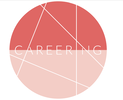Getting Role Ready
If you’re applying for a role online via Seek or TradeMe or other generic job ad site, or approaching a company and looking to connect ‘cold’ ie you’ve tracked down the recruiting manager/key influencer/leader and this is your first, and maybe only, attempt to engage them, then you need to nail it.
You only have one change to make a first impression – that’s true for when we meet people in person and when we connect digitally. To make the best first impression, be prepared.
Know about their business, and draw the lines between what they’re about and what that means to you and your capabilities.
In practical terms, this means you gotta get researching. Google, read, ask questions, scour their websites and social pages, and seek out what’s mentioned regarding their strategy and where they are going too, not just what’s been. If you can understand the organisation’s strategy, that really helps set you up for success.
It also helps you decide if they’re the ones for you. It’s really not a one way street.
You only have one change to make a first impression – that’s true for when we meet people in person and when we connect digitally. To make the best first impression, be prepared.
Know about their business, and draw the lines between what they’re about and what that means to you and your capabilities.
In practical terms, this means you gotta get researching. Google, read, ask questions, scour their websites and social pages, and seek out what’s mentioned regarding their strategy and where they are going too, not just what’s been. If you can understand the organisation’s strategy, that really helps set you up for success.
It also helps you decide if they’re the ones for you. It’s really not a one way street.
Sometimes it can feel like that, it can feel like the one with the vacancy that you want has all the power, but in reality you have as much power, you have the power of choice too.
Yes, there will be circumstances where you desperately want that spot, but if that organisation or spot isn’t what you anticipate it to be, do you really want it? What if the culture clashes with your own values?
Yes, there will be circumstances where you desperately want that spot, but if that organisation or spot isn’t what you anticipate it to be, do you really want it? What if the culture clashes with your own values?
Are They Right For You?

This is why investing in research early is a smart move as you can evaluate them too and be armed with great questions to better understand If it’s right for you too.
In the corporate world, companies want that too, they want you to be committed, genuinely so. They don’t want to lure you in with false promises and for you to then feel disconnected and unable to be successful. If you’re selected, they’re gunna want to see you fly. Within organisations there’s a constant focus on staff retention and engagement – we all can see that people that love what they do and are good at it, add value.
Recruiting and training people is a big investment, so if they’re constantly hiring and saying farewell to people that aren’t the right fit, don’t have aligned values, and/or who are unfulfilled or unhappy there, that adds up fast. It impacts culture, morale and performance, so you can see why managing expectations is important on both sides of the conversation.
At the very least, see if you can find out their vision, mission and values …
In the corporate world, companies want that too, they want you to be committed, genuinely so. They don’t want to lure you in with false promises and for you to then feel disconnected and unable to be successful. If you’re selected, they’re gunna want to see you fly. Within organisations there’s a constant focus on staff retention and engagement – we all can see that people that love what they do and are good at it, add value.
Recruiting and training people is a big investment, so if they’re constantly hiring and saying farewell to people that aren’t the right fit, don’t have aligned values, and/or who are unfulfilled or unhappy there, that adds up fast. It impacts culture, morale and performance, so you can see why managing expectations is important on both sides of the conversation.
At the very least, see if you can find out their vision, mission and values …
Vision
This is what the company aspires to be. It’s usually big, bold and emotive. It would be rare for a vision statement to be grounded and practical as that’s usually captured in the mission statement. It’s usually future-focused, and in the perfect world, all business strategy and decisions are tied back to making the vision a reality.
Example: Kathmandu's vision or core purpose: to inspire adventure in everyone
Mission
What the company actually does.
Example: Google - To organize the world’s information and make it universally accessible and useful
Values
Values are designed to reflect the culture and behaviours, what the organisation sees as important and they serve to show the team what is expected.
Example: Bolstur have a cool list of values here.
This is what the company aspires to be. It’s usually big, bold and emotive. It would be rare for a vision statement to be grounded and practical as that’s usually captured in the mission statement. It’s usually future-focused, and in the perfect world, all business strategy and decisions are tied back to making the vision a reality.
Example: Kathmandu's vision or core purpose: to inspire adventure in everyone
Mission
What the company actually does.
Example: Google - To organize the world’s information and make it universally accessible and useful
Values
Values are designed to reflect the culture and behaviours, what the organisation sees as important and they serve to show the team what is expected.
Example: Bolstur have a cool list of values here.
Understanding how these three come to life and what the organisation’s culture is like, is no mean feat.
That’s why the research piece is important, and preparing some killer questions for the interview is essential.
Back to the ‘cold’ contact. You’ve done the research, and sense-checked how they fit with you and you with them. If you can see there’s a couple of areas of alignment, where you’re what they need or where there’s lots of commonalities, focus your communication here.
Remembering that while you can see the threads between you and them, the person you’re reaching out to doesn’t know you from a bar of soap (*** weird saying! What’s the background for this, anyone know?) and for them to draw those lines might take more time than they have, or they may just not be able to see it from the information you’re providing in your CV, so it’s up to you. Make the connection for them. That’s why if you’re applying for a role, you have to, HAVE TO, include a cover letter.
And it has to be a good one. A role and company specific one. Not a generic one that says blah, blah summary of CV, blah and thank you.
Write a fresh cover letter every time – make it relevant and mention those areas of alignment.
Draw the lines together for them.
Be specific, and be authentic, show your style too.
While yes, there are protocols people expect in many industries and situations, it’s good to respect these and to communicate with the flair you would in person too so please don’t just cut and paste a generic cover letter template.
If you’ve had a soft lead in, such as you’ve met them personally somewhere, or had an introduction made, still do these steps, but remind them of the connection first before jumping into the details.
As with the cover letter, the same is to be said for CVs. Each application should have a relevant and compelling CV and cover letter. While creating a new CV for each role is a little too labour intensive, you can have a couple of versions ready to go that are fine tuned for each role. If you’re able to group the types of opportunities you’re after into a couple of areas where they have similar skills, write the CVs accordingly then tweak inline with the advice above, before you hit send or upload.
Easy, simple tip: Convert each CV and cover letter to pdf, and name each version of the CV for the role so you don't get confused and accidentally send the wrong one. So, say you're applying for a role at the cool AI startup Aider, save the CV file as "CV - Aider 2019.pdf" and "Cover Letter - Aider 2019.pdf"
That’s why the research piece is important, and preparing some killer questions for the interview is essential.
Back to the ‘cold’ contact. You’ve done the research, and sense-checked how they fit with you and you with them. If you can see there’s a couple of areas of alignment, where you’re what they need or where there’s lots of commonalities, focus your communication here.
Remembering that while you can see the threads between you and them, the person you’re reaching out to doesn’t know you from a bar of soap (*** weird saying! What’s the background for this, anyone know?) and for them to draw those lines might take more time than they have, or they may just not be able to see it from the information you’re providing in your CV, so it’s up to you. Make the connection for them. That’s why if you’re applying for a role, you have to, HAVE TO, include a cover letter.
And it has to be a good one. A role and company specific one. Not a generic one that says blah, blah summary of CV, blah and thank you.
Write a fresh cover letter every time – make it relevant and mention those areas of alignment.
Draw the lines together for them.
Be specific, and be authentic, show your style too.
While yes, there are protocols people expect in many industries and situations, it’s good to respect these and to communicate with the flair you would in person too so please don’t just cut and paste a generic cover letter template.
If you’ve had a soft lead in, such as you’ve met them personally somewhere, or had an introduction made, still do these steps, but remind them of the connection first before jumping into the details.
As with the cover letter, the same is to be said for CVs. Each application should have a relevant and compelling CV and cover letter. While creating a new CV for each role is a little too labour intensive, you can have a couple of versions ready to go that are fine tuned for each role. If you’re able to group the types of opportunities you’re after into a couple of areas where they have similar skills, write the CVs accordingly then tweak inline with the advice above, before you hit send or upload.
Easy, simple tip: Convert each CV and cover letter to pdf, and name each version of the CV for the role so you don't get confused and accidentally send the wrong one. So, say you're applying for a role at the cool AI startup Aider, save the CV file as "CV - Aider 2019.pdf" and "Cover Letter - Aider 2019.pdf"
|
We know it's a lot to wrap your head around but you're not alone!
In the next section on CVs, we cover off:
Keep an eye out over the next few weeks on our social pages so you know when they’re up. Shout out if you have specific questions you’d like us to answer too! |
|
© COPYRIGHT CAREERING 2018. ALL RIGHTS RESERVED.
|


